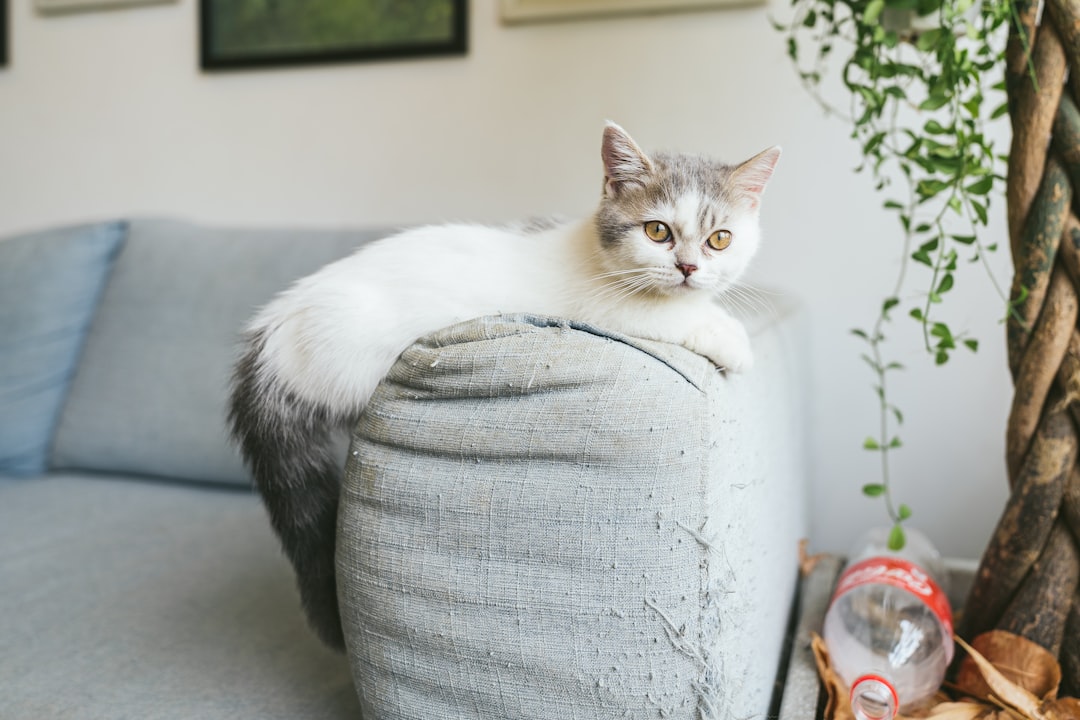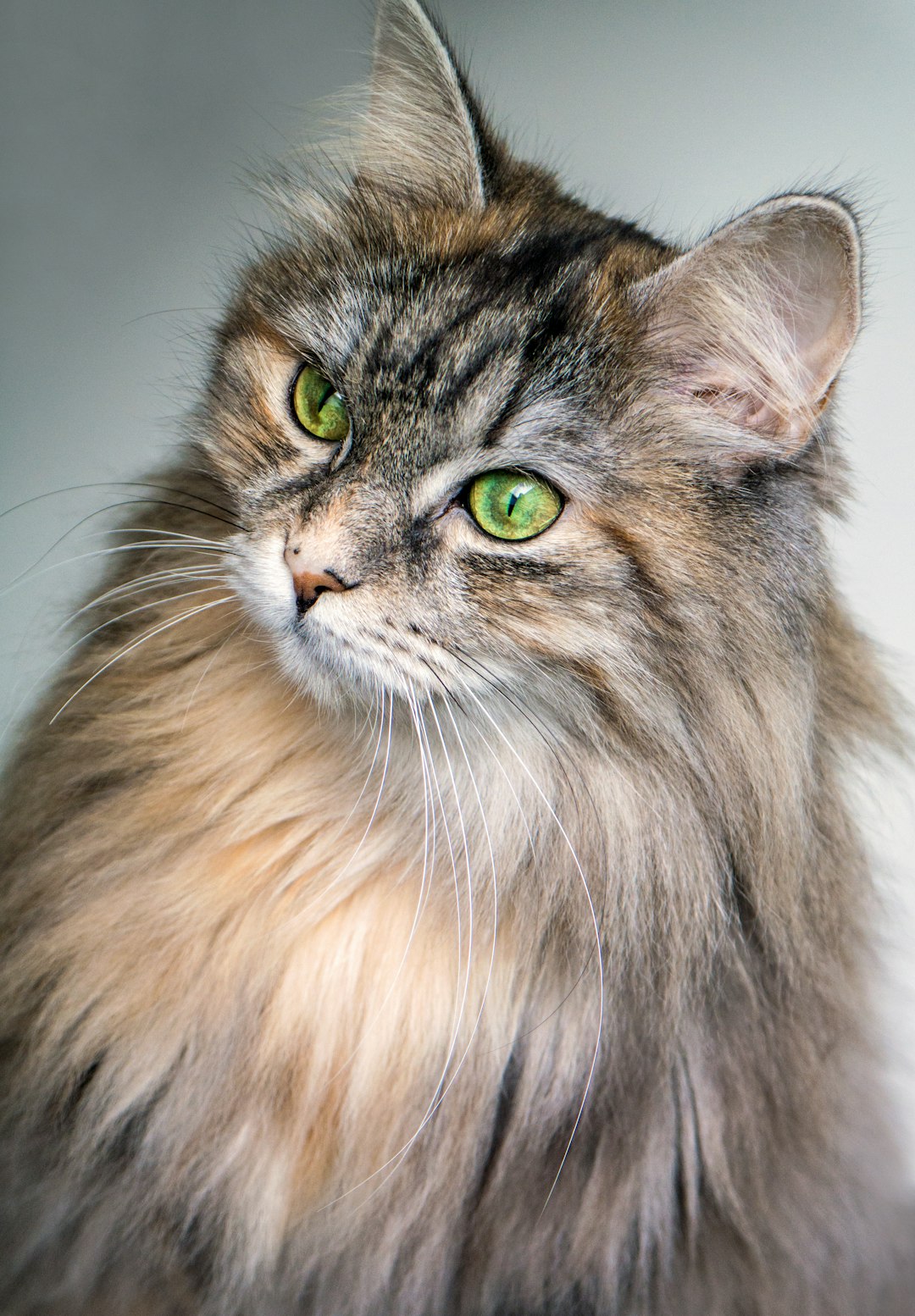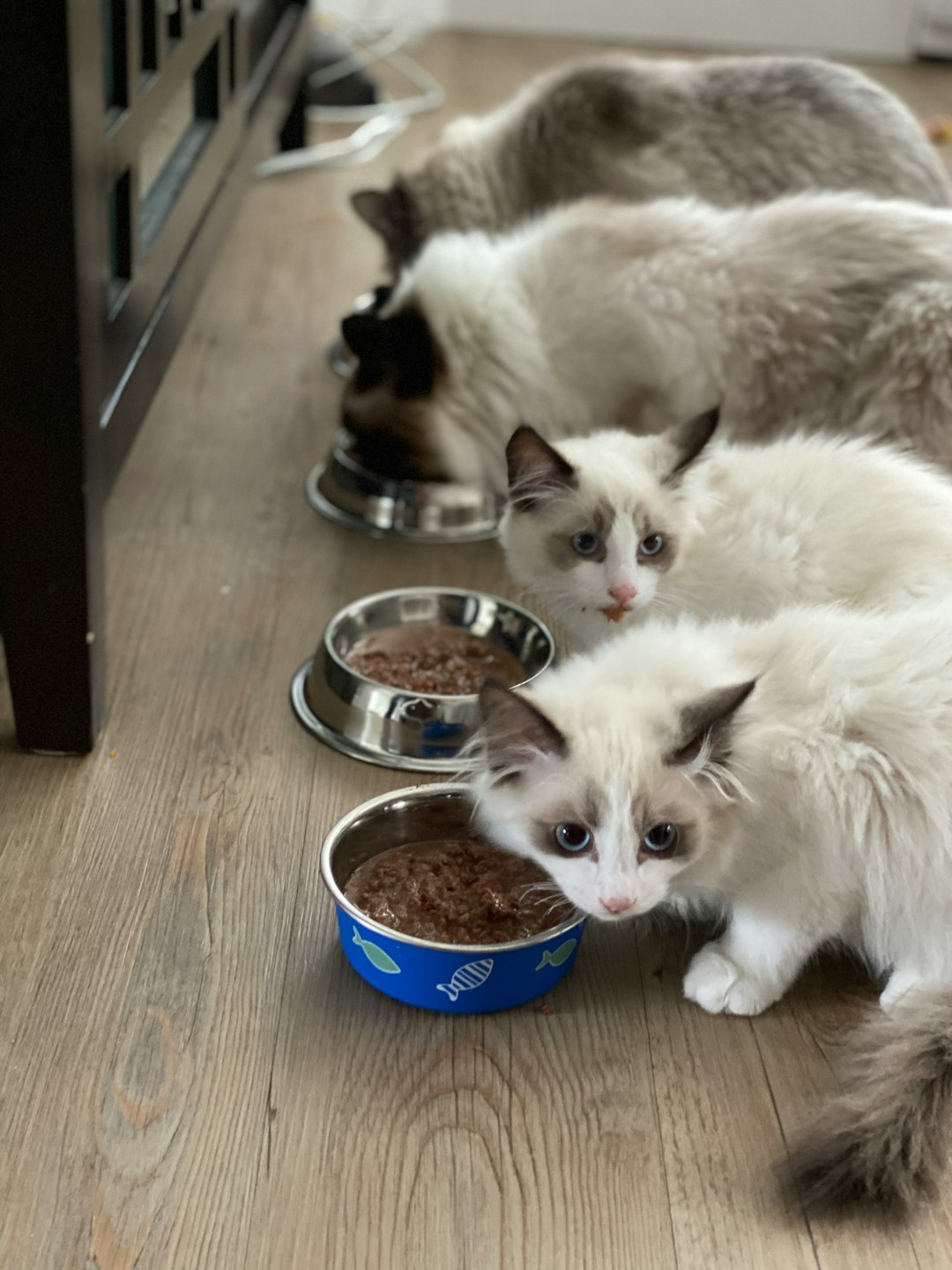Fleas are more than just a nuisance; they can significantly impact your cat’s health and well-being. As a responsible cat owner, ensuring your feline friend remains flea-free is essential. This is where flea spray for cats comes into play, offering an effective solution for combating these pesky parasites. In this comprehensive guide, we will explore the various aspects of flea control, including understanding the menace of fleas, the reasons to opt for sprays, and the key ingredients to look for when making your choice. Additionally, we’ll review top flea spray options currently available, tips for effective application, DIY solutions, and much more. Join us as we delve into the best practices for keeping your cat safe and comfortable all year round.
Understanding Fleas and Their Impact on Cats
Fleas are tiny yet formidable parasites that can significantly affect the health and well-being of our feline companions. These blood-sucking pests can lead to discomfort and various health issues if left untreated. Let’s delve into the essential aspects of fleas, their life cycle, and the impact they have on cats.
Common Symptoms of Flea Infestation
Recognizing the signs of flea infestation is crucial for timely intervention. Common symptoms include:
| Symptom | Description |
|---|---|
| Excessive Scratching | Cats may scratch or nibble at their skin. |
| Hair Loss | Frequent grooming can lead to bald patches. |
| Red/Bumpy Skin | Allergic reactions can cause inflamed skin. |
| Restlessness | Cats may seem anxious or uncomfortable. |
The Life Cycle of Fleas
Understanding the flea life cycle helps in effective prevention and treatment. The cycle includes the following stages:
| Stage | Duration | Description |
|---|---|---|
| Egg | 1-2 days | Fleas lay eggs in the cat’s environment. |
| Larva | 5-20 days | Larvae develop in carpets, bedding, and crevices. |
| Pupa | Several days to weeks | Pupae can remain dormant until conditions are right. |
| Adult Flea | 2-3 months | Fleas emerge to find a host, typically a cat. |
Health Risks Associated with Fleas
Fleas pose several risks to your cat’s health, including:
- Anemia: Frequent feeding can lead to significant blood loss, especially in young or vulnerable cats.
- Flea Allergy Dermatitis: Cats can develop severe skin allergies that manifest as intense itching and inflammation.
- Transmission of Diseases: Fleas can carry tapeworms and other pathogens that can harm your cat.
Proactively managing flea populations and understanding their effects on your pet is crucial for maintaining their health. Consider using flea spray for cats as a part of a comprehensive flea management strategy.
Why Use Flea Spray for Your Cat?
Benefits of Flea Sprays
Flea sprays for cats are essential due to their effectiveness and convenience. Here are some key benefits:
| Benefit | Details |
|---|---|
| Immediate Relief | Flea sprays provide fast-acting relief from itching and discomfort. |
| Easy Application | Most sprays come in user-friendly bottles for straightforward application. |
| Versatility | Suitable for indoor and outdoor use, ensuring comprehensive coverage. |
| Extended Protection | Many products offer prolonged efficacy against flea re-infestation. |
Comparison to Other Flea Treatments
Flea sprays often outperform other treatments, such as collars or topical options, in certain aspects. Below is a comparative overview:
| Treatment Type | Advantages | Disadvantages |
|---|---|---|
| Flea Sprays | Fast acting, easy application | Requires regular reapplication |
| Flea Collars | Long-lasting, continuous protection | May cause skin irritation |
| Topical Treatments | Targeted treatment, longer-lasting | Messy application, potential for allergies |
Safety of Flea Sprays for Cats
Safety is a paramount concern for pet owners. Most flea sprays for cats are formulated with pet-safe ingredients. However, checking for the following is crucial:
- Ingredients: Always read the label for cat-safe compounds.
- Age Restrictions: Some sprays are unsuitable for kittens or sensitive cats.
- Environment: Ensure proper ventilation during application to minimize inhalation risks.
In summary, utilizing flea sprays not only ensures effective flea control but also promotes the well-being of your feline companion.
Key Ingredients to Look For in Flea Sprays
Understanding the components of flea spray for cats is crucial for effective pest control. Different ingredients serve unique purposes and can make a significant difference in the success of your flea management efforts.
Synthetic Chemicals vs. Natural Ingredients
Flea sprays typically fall into two categories: synthetic chemicals and natural ingredients. Synthetic chemical sprays often contain potent compounds designed for rapid knockdown and elimination of adult fleas. However, they may pose risks to sensitive cats or humans if used incorrectly. On the other hand, natural ingredient sprays, which often feature plant-based components, tend to be safer but may require more frequent applications. Below is a comparison table summarizing the two:
| Ingredient Type | Pros | Cons |
|---|---|---|
| Synthetic Chemicals | Fast-acting, highly effective | Potential toxicity, skin irritation |
| Natural Ingredients | Safer for pets and environment | May be less effective, shorter duration |
Essential Oils for Flea Control
Many cat owners are increasingly turning to flea spray for cats that incorporates essential oils such as lavender, peppermint, and cedarwood. These oils not only repel fleas but also provide pleasant aromas. While they offer a more holistic approach, it’s crucial to ensure that these oils are safe for cats, as some essential oils can be toxic to them. Always consult with a vet for recommendations.
Insect Growth Regulators (IGRs)
Insect Growth Regulators (IGRs) are a powerful category of ingredients that prevent flea eggs and larvae from developing into adults, thus breaking the flea life cycle. Commonly found in many commercial sprays, IGRs can significantly reduce the flea population in your home. Look for products containing methoprene or pyriproxyfen to enhance your flea management strategy. These ingredients can often complement traditional flea sprays for a more comprehensive solution.
In summary, knowing what to look for in flea sprays can make all the difference in effectively protecting your feline friend from these annoying pests.
Top Flea Spray Options Available Today
Reviews of Popular Brands
When it comes to choosing the right flea spray for cats, several brands stand out due to their effectiveness and safety. Here are a few noteworthy options:
| Brand | Key Features | Effectiveness |
|---|---|---|
| Frontline Plus | Fast-acting, waterproof, and safe for kittens | High |
| PetArmor | Affordable, long-lasting protection | Moderate to High |
| Sentry | Natural ingredients, suitable for sensitive cats | Moderate |
| Vet’s Best | Plant-based, good for indoor use | High |
These brands have garnered positive feedback among cat owners looking for reliable solutions.
Price Range of Flea Sprays
Pricing can vary significantly based on the brand and ingredients. Here’s a quick overview of what to expect:
| Price Range | Brands in This Range |
|---|---|
| $10 – $20 | Sentry, Vet’s Best |
| $20 – $30 | Frontline Plus, PetArmor |
| $30 and above | Premium or veterinarian-recommended brands |
Generally, investing in a slightly higher-priced option can offer you better protection and fewer chemical irritants for your cat.
Where to Buy Flea Sprays
Flea sprays are widely available, making it easy for cat owners to find the right product. Here are the best places to purchase them:
| Store Type | Examples |
|---|---|
| Online Retailers | Amazon, Chewy, Petco |
| Pet Supply Stores | Local pet shops, chain stores |
| Veterinary Clinics | Treatment plans often include recommendations |
By exploring these options, you can ensure that your cat has the best protection against fleas with the right flea spray for cats.
How to Apply Flea Spray Effectively
Applying flea spray for cats correctly is essential for maximizing its effectiveness. Follow these steps to ensure you provide your feline friend with the best protection against fleas.
Step-by-Step Application Guide
- Prepare Your Cat: Make sure your cat is calm and in a confined space to avoid any disruptions during application.
- Choose the Right Environment: Apply the spray in a well-ventilated area to minimize inhalation risks.
- Hold the Spray Can: Maintain the can 6-8 inches away from your cat’s fur when spraying.
- Start with a Small Area: Begin by spraying along the back, moving toward the tail, and avoid the face and eyes.
- Even Distribution: Ensure even coverage by parting your cat’s fur and spraying directly onto the skin.
- Massage the Product In: Gently massage the spray into your cat’s coat to enhance absorption.
Frequency of Application
Consistency is key. Most brands recommend a reapplication every 1 to 4 weeks, depending on the product’s formulation. Refer to the guidelines on the flea spray for cats label to determine the appropriate frequency for your specific product.
Safety Precautions During Application
- Avoid the Face and Eyes: Keep the spray away from sensitive areas to prevent irritation.
- Follow Label Instructions: Always adhere to the manufacturer’s directions for safe use.
- Check for Reactions: Monitor your cat for any unusual behavior or skin reactions after application, and consult a veterinarian if necessary.
By following this guide, you’ll ensure that your cat remains comfortable and protected from fleas effectively.
DIY Flea Spray Solutions
Homemade Recipes for Flea Sprays
Creating your own flea spray for cats can be both cost-effective and simple. Here are a couple of popular homemade recipes:
| Recipe | Ingredients | Preparation |
|---|---|---|
| Vinegar Spray | 1 part apple cider vinegar, 1 part water | Mix ingredients in a spray bottle. |
| Essential Oil Spray | 1 cup water, 10 drops of cedarwood or lavender oil | Combine in a spray bottle. Shake well before use. |
These natural sprays utilize the potent properties of vinegar and essential oils to deter fleas without harsh chemicals.
Effectiveness of DIY Solutions
While many cat owners find success with DIY methods, their effectiveness can vary. Generally, homemade solutions are less potent than commercial products but may be sufficient for minor infestations.
| Solution Type | Effectiveness |
|---|---|
| Vinegar Spray | Moderate, may repel fleas |
| Essential Oil Spray | Variable, depends on oil type |
It’s essential to monitor your cat’s reaction and flea activity before relying solely on DIY solutions.
Pros and Cons of DIY Flea Treatments
DIY flea sprays come with their own set of advantages and disadvantages:
| Pros | Cons |
|---|---|
| Natural ingredients, generally safe for cats | May require frequent application |
| Cost-effective solution | Potential for allergic reactions |
| Customizable to personal preferences | Less effective against severe infestations |
In summary, while DIY flea solutions can be a helpful option for cat owners aiming to manage flea issues, it’s crucial to weigh their benefits against the potential drawbacks. Always ensure that any homemade treatment is safe for your furry friend!
Alternatives to Flea Sprays
When it comes to keeping your feline friend free from pesky fleas, understanding alternatives to flea spray for cats is essential. While sprays can be effective, various other options are available for cat owners. Let’s delve into some popular alternatives.
Flea Collars and Their Effectiveness
Flea collars are a common choice among pet owners. These collars release chemicals that repel or kill fleas over time. Their effectiveness can vary based on the brand and the ingredients used. Here’s a quick comparison of some benefits and drawbacks:
| Benefits | Drawbacks |
|---|---|
| Long-lasting protection (up to 8 months) | May cause skin irritation |
| Easy to use and apply | Limited scope (just around the neck) |
| Continuous release of active ingredients | Not all collars are effective on all flea types |
Flea Oral Medications vs. Sprays
Flea oral medications offer a powerful means to combat fleas, working systemically within the pet’s body. Unlike sprays that act externally, these medications prevent fleas from developing and can kill adult fleas. Here’s a comparison:
| Oral Medications | Flea Sprays |
|---|---|
| Starts working quickly; usually within hours | May take longer to show effects |
| Effective for severe infestations | Requires direct application |
| Available from a veterinary prescription | Generally available over the counter |
Natural Flea Remedies
For a more holistic approach, many pet owners turn to natural flea remedies. These can include the use of essential oils or herbal treatments. Here are some effective options:
| Natural Remedies | Considerations |
|---|---|
| Diatomaceous Earth | Safe for cats but ensure they don’t inhale dust |
| Apple Cider Vinegar | Diluted solution can repel fleas when sprayed on fur |
| Essential Oils (e.g., lavender, cedarwood) | Must be used with caution; consult a veterinarian first for safety |
In summary, while flea spray for cats is effective, understanding these alternatives empowers you to choose the best option tailored to your cat’s needs. Each solution comes with its benefits and considerations, ensuring you can maintain your cat’s comfort while keeping fleas at bay.
What to Do After Spraying for Fleas
After you’ve applied flea spray for cats, it’s crucial to follow the right steps to ensure both your cat’s safety and the effectiveness of the treatment. Here’s a breakdown of what you should do:
Cleaning Your Home After Treatment
- Wait Before Vacuuming: Firstly, allow the flea spray to settle. Wait at least 24 hours before vacuuming your carpets and upholstery to ensure maximum efficacy.
- Thorough Cleaning: After this period, vacuum thoroughly. Focus on areas your cat frequents, such as bedding, carpets, and furniture.
- Wash Fabrics: Launder your cat’s bedding and any blankets they use in hot water to eliminate any lingering fleas or eggs.
Monitoring Your Cat’s Health
- Observe Behavior: After application, keep a close eye on your cat’s behavior. Look for excessive scratching or signs of discomfort.
- Check for Side Effects: Some cats might experience temporary skin irritation. If you notice any severe reactions, consult a veterinarian immediately.
Reinfestation Prevention Tips
- Regular Maintenance: To prevent future infestations, consider using the flea spray for cats on a regular basis as recommended by the product instructions.
- Flea Control Routine: Implement a monthly flea prevention plan with products that are specifically designed for this purpose.
- Environmental Management: Treat your home and garden if necessary, as fleas can easily reinfest from untreated areas.
Following these steps will not only ensure your cat is safe and healthy but also significantly decrease the chances of future flea infestations.
Common Mistakes to Avoid When Using Flea Spray
Over-Application Risks
One of the most common mistakes pet owners make when using flea spray for cats is over-applying the product. Applying too much spray can lead to skin irritations or severe allergic reactions in cats. Moreover, excessive use does not necessarily create a more effective barrier against fleas. Instead, it can cause toxicity. Always follow the manufacturer’s recommended dosage to ensure your cat’s safety.
Ignoring Product Instructions
Each flea spray comes with specific instructions tailored to its formula. Ignoring these guidelines can lead to ineffective treatment or harm to your pet. Product instructions typically include information on how to apply the spray, how often to use it, and any precautions to consider. Skipping these instructions may result in missed spots or even harm to your feline friend. Always read and adhere to the label — your cat will thank you!
Not Treating the Environment
Fleas don’t just live on your cats; they also inhabit your home. A frequent mistake is treating only the pet and neglecting the surrounding environment. Fleas can hide in carpets, upholstery, and bedding, laying eggs that will hatch later. To combat this, vacuum frequently and use a complementary environmental flea spray. This two-pronged approach ensures that not only your cat but also your home is free from these pesky invaders.
| Mistake | Consequences | Prevention |
|---|---|---|
| Over-Application | Skin irritations, toxicity | Follow recommended dosage |
| Ignoring Product Instructions | Ineffective treatment, harm | Always read and follow the label |
| Not Treating the Environment | Fleas returning quickly | Vacuum regularly and spray your home |
By avoiding these common pitfalls, you can ensure a safe and effective treatment process for your beloved feline companion.
Expert Tips for Flea Prevention
Preventing fleas from invading your feline companion requires diligence. Here are expert tips to help you keep your cat flea-free:
Regular Grooming Tips
- Brush Your Cat Frequently: Regular brushing can help remove fleas and their eggs from your cat’s fur before they become a problem. Use a fine-toothed comb specifically designed for flea removal.
- Bathing Schedule: Bathing your cat occasionally with flea shampoo can effectively eliminate existing fleas and prevent new infestations. Just ensure that your cat is comfortable with water.
Environmental Control Measures
Utilizing preventive measures in your home is crucial. Consider the following:
| Measure | Tips |
|---|---|
| Vacuuming | Vacuum carpets, rugs, and furniture frequently to eliminate flea eggs and larvae. Dispose of the vacuum bag immediately to avoid re-infestation. |
| Wash Bedding | Regularly wash your pet’s bedding and any soft furnishings they frequent in hot water to kill any potential fleas. |
| Yard Maintenance | Keep your yard clean by mowing the lawn and removing debris, as these measures reduce flea habitats. |
Routine Health Check-ups
- Consult Your Veterinarian: Schedule regular vet visits for flea treatment options tailored to your cat’s specific needs. Discuss options beyond just flea spray for cats, ensuring a comprehensive prevention strategy.
- Stay Alert for Symptoms: Regularly monitor your cat for signs of fleas or flea allergy dermatitis, such as excessive scratching or hair loss. Early detection can lead to quicker recovery and control.
By implementing these expert tips, you can significantly reduce the likelihood of fleas settling into your home and causing distress to your furry friend.
Frequently Asked Questions
What ingredients should I look for in a cat-safe flea spray?
When selecting a cat-safe flea spray, it’s important to look for natural ingredients that are effective yet safe for your pet. Ingredients such as peppermint oil, rosemary oil, and cedarwood oil are commonly found in many cat-friendly flea sprays and are known for their repellent properties without being harmful. Avoid sprays containing permethrin, pyrethrins, or any synthetic chemicals, as these can be toxic to cats. Always check the label and consult your veterinarian if unsure.
How often should I apply flea spray to my cat?
The frequency of applying flea spray can vary based on the product and the severity of the flea infestation. Generally, most flea sprays recommend application every 1-2 weeks. However, it’s crucial to follow the instructions provided by the manufacturer, as some sprays are formulated for long-lasting effects and may require less frequent application. Remember to monitor your cat for any signs of discomfort or allergic reactions after applying the spray.
Are there any side effects associated with flea sprays for cats?
Yes, like any product, flea sprays can cause side effects in some cats. Common side effects may include skin irritations, itching, or allergic reactions. It’s essential to introduce the flea spray gradually and observe your cat for any adverse reactions. If you notice excessive scratching, redness, or swelling at the application site, you should discontinue use immediately and consult your veterinarian for advice on alternative flea control methods.
Can I use flea spray if my cat is pregnant or nursing?
Using flea spray on pregnant or nursing cats requires caution. Many flea sprays contain chemicals that could potentially harm the mother or her kittens. It’s crucial to choose products specifically labeled as safe for use on pregnant or nursing pets. Always consult with your veterinarian before administering any flea treatment during this sensitive period to ensure the safety of both the mother and her kittens.
What are the benefits of using flea spray versus other flea treatments?
Flea sprays offer several benefits compared to other flea treatments, such as oral medications or topical solutions. They provide immediate relief by killing fleas on contact and can effectively control larger infestations. Flea sprays also allow for easy application and quick drying times, making them convenient for busy pet owners. Furthermore, many flea sprays are formulated with natural ingredients, allowing for safer use around both pets and humans.



